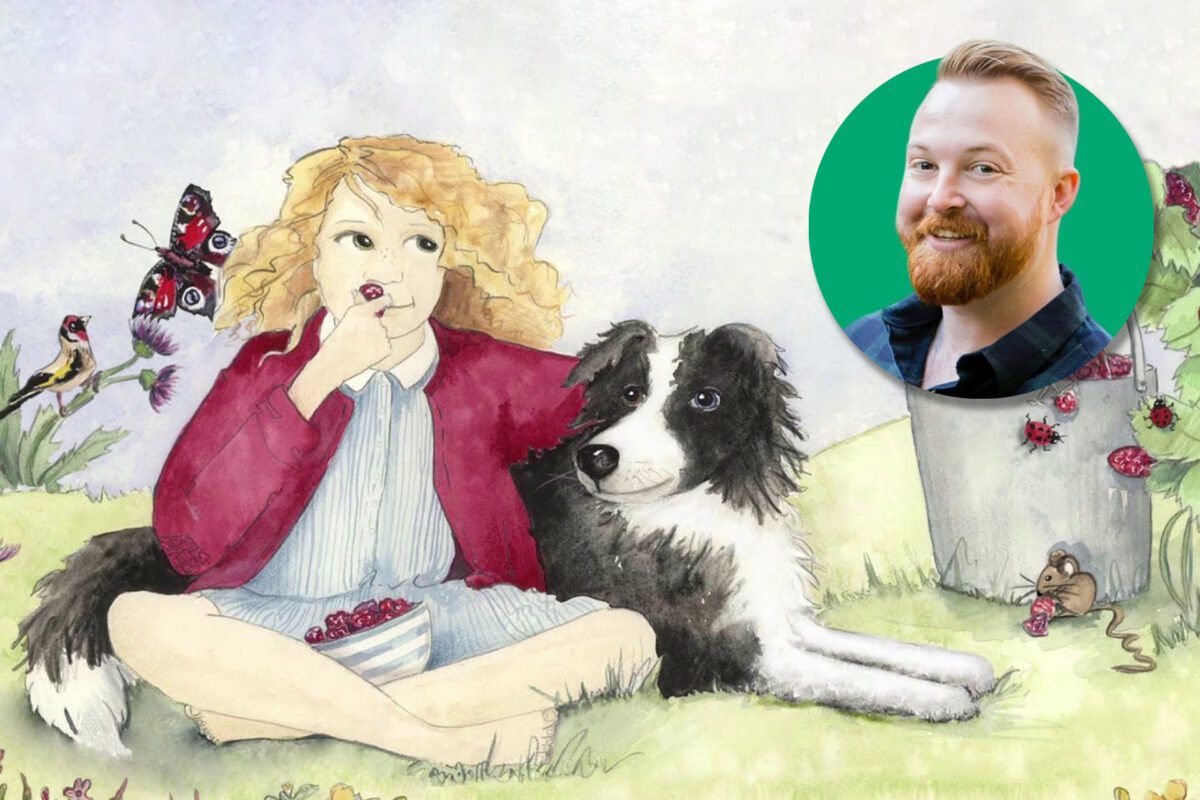
“Let me tell you a little story…” is the way author David Pullar starts many of his answers.
Horticulturalist David Pullar, 34, is keeping his family’s storytelling legacy alive both as chair of the Heart Of The Travellers’ charity, set up to celebrate Traveller heritage and culture in Scotland and for his book Wee Bessie charting his Great Granny’s life as a Traveller in the 1930s – still the only children’s picture book dedicated to Scottish Travellers. Published in 2019 Wee Bessie is stocked in every library in Scotland. Interview by Nicola Baird.
Q: Your great grandmother Betsy Whyte is the inspiration for your book Wee Bessie. When did you discover her legacy as a storyteller?
I was probably around 12 and all the family were together at my grandparents. I remember my uncle sitting in the chair singing The Yellow on the Broom, in which sadly the neighbouring town of Brechin was the butt of many jokes by people from Montrose. To be honest I thought it was a joke song, but then I was told it was about a book my Great Granny Bessie had written. I thought wow this is something special.
Q: Wee Bessie is a picture book for 3-6-year-olds. Why did you write a book for such young children?
I wanted to tell my Great Granny’s story but in a new way and for a new audience. Children are very impressionable, so I wanted to share with them what it was like for a child around their age who was like them physically and with the same emotions, but who had a completely separate way of living and that it was OK. The goal was that children who read the book would connect with Wee Bessie and would make up their own minds about what it meant for her to be a Traveller, giving them a connection, and better understanding, which had the potential to stay with them into adulthood.
Q: How did you put the book together?
It was three o’clock in the morning, and something was telling me to get up and write the first draft of this poem. But the planning and editing took a few years. I also wanted the pictures to do most of talking, so if there was something a child couldn’t read, they could read it from the picture. I wanted something that wasn’t precise and wasn’t digital – illustrations that felt timeless so they could have been around for 50 years or more before, by somebody as Scottish as possible. I went online and came across illustrator Ruthie Redden – and it was exactly what I was looking for. I also came across a blog I’d seen years before talking about how inspired she’d been by my Great Granny’s books and how she felt a strong connection, especially on the nature side of things. It was meant to be.
Q: The story was to celebrate Bessie Whyte’s 100th birthday – why do you think it is important that it’s in every library in Scotland?
Many children have the internet now, but there are some who don’t and some parents who are choosing to limit internet access and provide books instead – so having a book in every library across Scotland widens its reach to readers. It was important for me to celebrate great granny Bessie’s 100th birthday by putting her back on the road in the form of her younger self, Wee Bessie.
Q: Have you been pleased by the impact of the book?
People regularly contact me to say how wonderful it is, and they tell me how the kids react, usually with concern for wee Bessie. They say they would like to be her friend and she would be welcome at their school. They think she is interesting and what better reaction is interest? They send me pictures and videos of their children and grandchildren reading it. It’s not just young people who like it, I’ve seen older people buy it just for themselves because it reminds them of a time gone by, they pick it up and hug it like it is something precious. Wee Bessie is being used as a learning resource in schools and for Traveller children, it is even being used by groups to help with adult literacy, but the sweetest thing is that elderly people in care homes have been given it too.
I recently won an Arts Culture and Heritage award from the Gypsy-Traveller community. It means a great deal to have Wee Bessie acknowledged by the Travelling community as something culturally important.
Q: Was your childhood anything like the child in Wee Bessie?
Mine was different! I didn’t travel, except for day trips in the van and the occasional overnight stay where my grandparents would take us to the places they used to camp and remember stories and people they met there. I did have ponies: three stubborn Shetlands. I suppose there are always a connection with horses if you are a Traveller. My Great Granny never saw eye-to-eye with horses, and I can kind of understand why, like her they were hard to tame.
I would often go to help my Mum and Grandparents doing field work such as daffodil and backbreaking turnip harvesting. My Grandfather was a Buckie picker, (there is a tune of that name in his memory), a traditional Traveller job which involved collecting whelks from the shore. It was a cold job with your hands and sleeves wet and often a welly boot full of water from slipping on the seaweed. It was too tough for my Granny so she would set up the fire and have the tea ready.
I went to school full-time, but I never could focus, like Great Granny Bessie I was always dreaming of being outside. That’s why I became a gardener.
Q: June is Roma, Gypsy, Traveller History Month. How will you celebrate this in 2022 and beyond?
Usually there are storytelling or musical events held throughout the month which I either attend or participate in, but Covid has changed this. This year there were plans for a walking tour and educational workshops with a Romany author, Richard O’Neal, working with young Traveller people to enhance their story telling skills.
I’m also working on an exhibition about Wee Bessie: the making of a storyteller – looking at the way childhood shaped my great granny, potentially to open in 2023. Part of this is writing music and filming a short video for a song, White Rose of the Road, with a couple of interviews about what it means to be a Traveller.
Q: What quintessential elements of Traveller life are still around in Scotland?
Song and storytelling are the biggest things which remain today and a feeling of getting together, talking about, and remembering the past and being able to have the freedom to get outside with the sun on our face and to have a fire and enjoy the land to which we belong.
Q: Did you get told stories as a child?
I was told by my Grandfather stories of real people and real situations which were usually all pretty funny. I am very lucky because there are lots of recordings of my great granny Bessie which I can access at any time. Asa child, I never really read books. I was outside all day playing and when I came in, it was bath and bed. I would be so exhausted from playing I couldn’t stay awake to read. I’m still like that now; I read a few pages and fall asleep. Though I did spend a lot of time in the school library reading magazines on country living, gardening and poultry husbandry.
Only in the last few years have I started to go to libraries and books shops to look at books usually in the hope of inspiration. I enjoy books about nature, wildlife and poetry.
Q: What next?
There are no plans for another Wee Bessie book but there are plans for a touring exhibition of Ruthie Redden’s wonderful illustrations and perhaps a collection of great granny Bessie’s stories and songs.
- Wee Bessie by David Pullar (2019)
- David’s Great Granny Bessie (Betsy Whyte) wrote books about pre-World War Two Traveller life around Montrose – see, The Yellow on the Broom and Red Rowans and Wild Honey, published posthumously in 1990.
- To contact David, please email rowansandhoney@gmail.com

